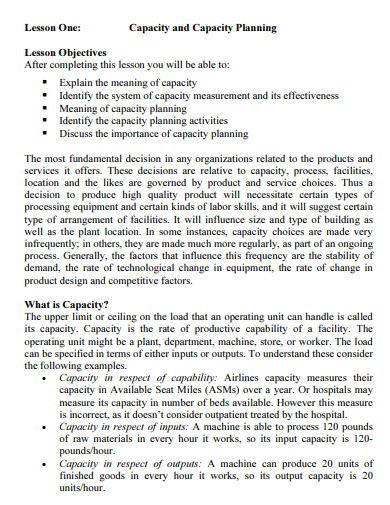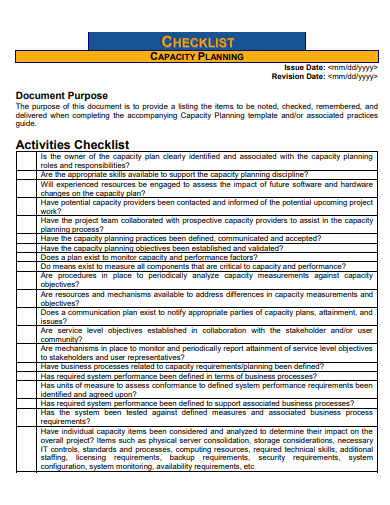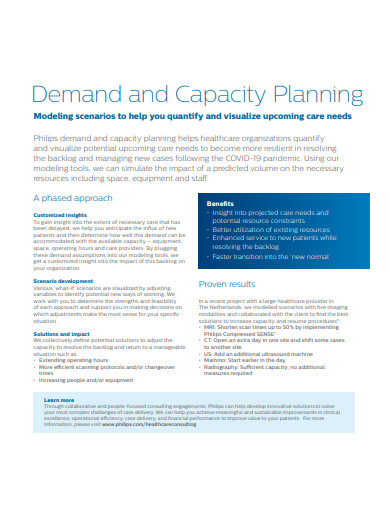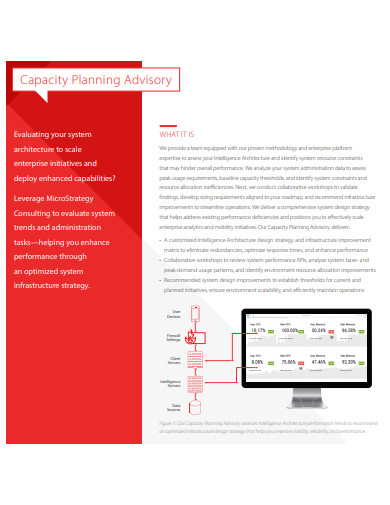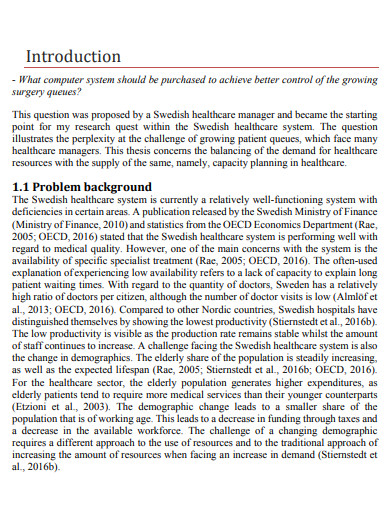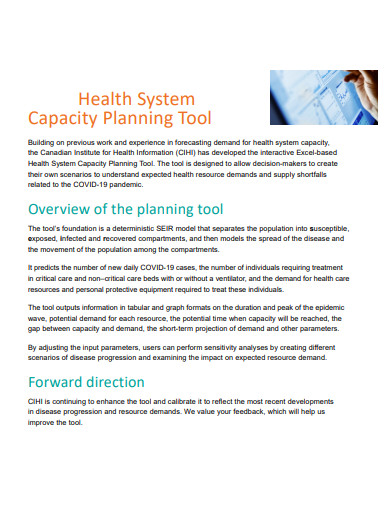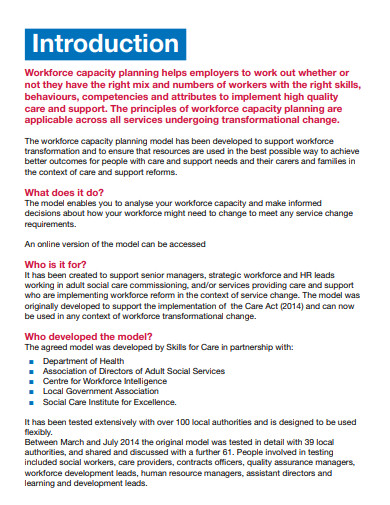Input needs, conversion process, and output are all taken into account while designing a manufacturing system. After taking into account the prediction and long-term planning, the business should begin capacity planning. The ability to attain, store, or generate is defined as capacity. Capacity in an organization refers to a given system’s potential to manufacture output within a specific time period. Management capacity is defined in operations as the quantity of input resources available to produce proportionate output over time. In general, capacity refers to the maximum production capacity that may be achieved within a typical working schedule.
10+ Capacity Planning Samples
Capacity planning is a sort of production planning that entails assessing production capacity and manpower requirements to ensure your supply chain is ready to meet demand. Capacity planning informs firms on how and when to operate, detect faults, improve design capacity, and manage risk over a set period of time.
1. Capacity Planning
2. Long-Term Capacity Planning
3. Spatial Capacity Planning
4. Capacity Planning Checklist
5. Demand and Capacity Planning
6. Capacity Planning Advisory
7. Sample Capacity Planning
8. Pharmaceatical Capacity Planning
9. Health System Capacity Planning
10. Workforce Capacity Planning
11. Printable Capacity Planning
Types of Capacity Planning
The three different types of capacity planning ensure that you have sufficient, but not too much, of three primary resources in the long and near term. You should plan ahead of time, whether it’s weeks, months, or even a year.
Product capacity planning
A product capacity plan guarantees that you have enough items or components to complete your tasks. Flowers, vases, and greeting cards are examples of what a florist might sell. This would include materials like chlorine that are essential to accomplish the job for a pool maintenance firm.
Workforce capacity planning
Workforce capacity planning guarantees that you have adequate team members and operating hours to finish jobs. This form of planning will also assist you in communicating general company, resource, and personnel needs to relevant stakeholders, determining when you need to acquire more people, and determining how far in advance you need to begin hiring depending on length of your onboarding process.
Tool capacity planning
Planning your tool capacity ensures that you have enough instruments to perform jobs. This comprises any trucks, assembly line parts, or machinery required to produce and distribute your goods.
Strategic capacity planning is a method for identifying and measuring overall production capacity. Strategic capacity planning is used for capital-intensive resources such as plant, machinery, manpower, and so on.
Strategic capacity planning is critical because it assists the organization in addressing its future needs. Planning ensures that operating costs are kept as low as feasible while maintaining quality. It guarantees that the firm remains competitive and can meet its long-term growth objectives.
Obviously, production capacity, strategy planning, and project planning all go together. Planning is the process of scheduling the hours of team members so that the task is completed on time. Capacity management is not a one-size-fits-all procedure. Because every company is unique and demand can be volatile, project managers can employ a variety of capacity planning methodologies to respond to various conditions.
FAQs
What is the ultimate goal of capacity planning?
The ultimate purpose of capacity planning is to meet current and future demand while wasting as little as possible. Lead capacity planning, lag strategy planning, and match strategy planning are the three types of capacity planning based on aim.
What are the factors affecting capacity planning?
Effective capacity planning is dependent on elements such as production facility (layout, design, and location), product line or matrix, production technology, human capital (job design, compensation), operational structure (scheduling, quality assurance), and external structure ( policy, safety regulations)
Once you’ve established your high-level (capacity) plan, you may utilize it to drive your scheduling and route planning. To attain the best level of logistical accuracy, you should combine all three. Capacity planning will also better prepare you to tackle challenges. No matter how well you plan, you must be capable of responding swiftly when unforeseen obstacles come.
Related Posts
FREE 7+ Fashion Business Plan Samples in PDF
FREE 10+ Sprint Planning Samples In MS Word | Google Docs | PDF
FREE 10+ Wedding Planning Samples in MS Word | Apple Pages | Powerpoint | PDF
FREE 9+ Monthly Study Planner Samples in PSD | Illustrator | InDesign | PDF
FREE 9+ Sample Curriculum Planning Templates in PDF | MS Word
FREE 10+ Teacher Development Plan Samples in MS Word | Google Docs | Apple Pages | PDF
FREE 10+ Basketball Practice Plan Samples in PDF
FREE 12+ School Business Plan Samples in PDF | MS Word | Apple Pages | Google Docs
FREE 7+ Client Strategic Plan Samples in PDF | MS Word
FREE 11+ Trucking Business Plan Templates in PDF | MS Word | Google Docs | Pages
FREE 7+ Small Hotel Business Plan Samples PDF | MS Word | Apple Pages | Google Docs
FREE 14+ Bakery Business Plans in MS Word | PDF | Google Docs | Pages
FREE 4+ Yearly Lesson Plan Samples in PDF
FREE 50+ Strategic Planning Samples in Google Docs | Pages | PDF | MS Word
FREE 10+ Construction Project Plan Samples in MS Word | Google Docs | Apple Pages | PDF

